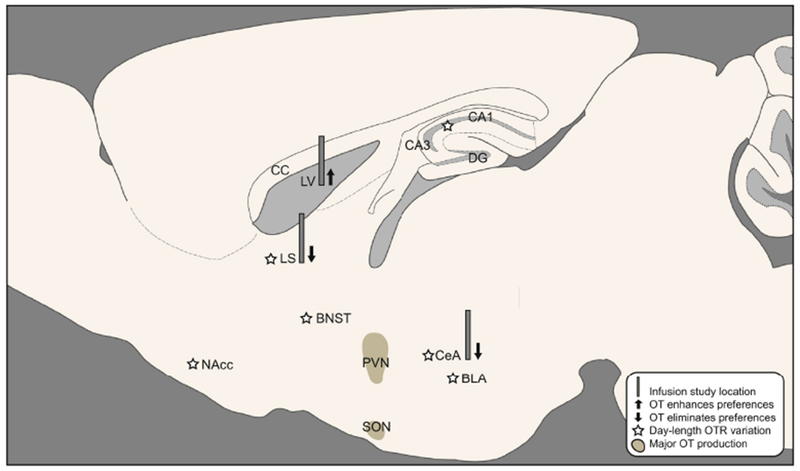Figure 3.

Oxytocin signaling pathways are implicated in meadow vole affiliative behavior. Stars indicate regions with significant day-length dependent variation in OTR density reported in one or more publications: CeA (Parker et al. 2001, Beery and Zucker 2010), LS and BLA (Parker et al. 2001), NAcc, BNST, Anterior hippocampus (Beery et al. 2014). In all cases, OTR density was higher in short day lengths. Cannulae indicate the location of OT infusion studies. Up arrows indicate that oxytocin infused to the lateral ventricle enhances partner preferences, while down arrows indicate elimination of partner preferences by oxytocin (Beery and Zucker 2010, Anacker et al. 2016, Christensen and Beery 2018. Major sites of oxytocin production (PVN, SON of the hypothalamus) are indicated with shading.
